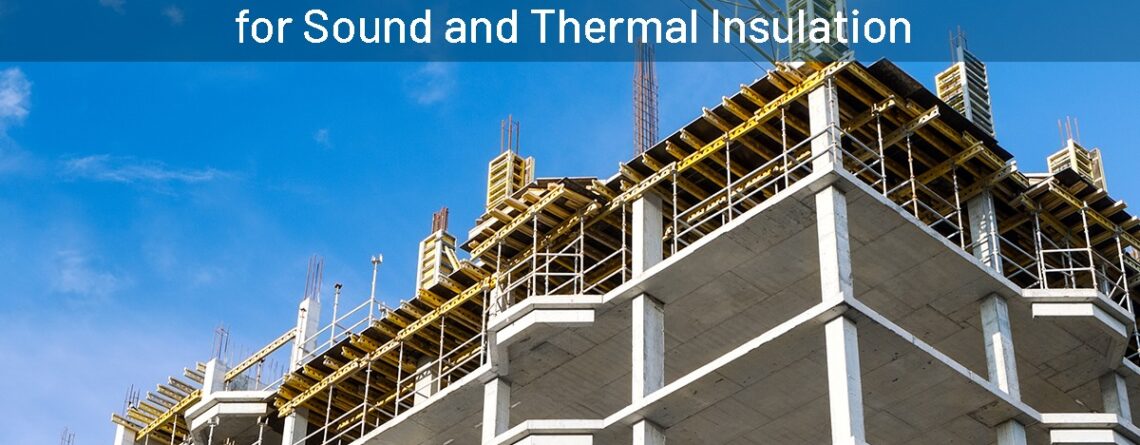Italian Minimum Environmental Criteria for Sound and Thermal Insulation
The Minimum Environmental Criteria (Italian CAM), are a series of technical specifications and contractual conditions that must be included within the specifications for the purchase of products and services falling within the categories defined by the Italian PAN GPP.
The Italian CAM, minimum environmental criteria, defined in DM 11/10/2017, are therefore the environmental requirements defined for the various stages of the purchasing process. They aim at identifying the design solution, the product or the best service from an environmental point of view along the life cycle.
In practice, compliance with these requirements ensures that the purchased product is partly “eco-sustainable” taking into account the entire life cycle: from its disposal, to its availability on the market, to the transparency of the production chain
The acoustic insulation and sound absorption sector is also regulated by Cams and companies in the sector must pay particular attention to these criteria, in order to be eligible for tenders.
The Italian Cams are mandatory in the following cases:
- To be part of the first driving action of the Ecobonus to 110%, relating to the isolation of more than 25% of the building’s surface;
- In case of entrustment of planning services and works for the new construction, renovation and public buildings’ maintenance (approved with DM 11 October 2017, in G.U. General Series n. 259 of 6 November 2017).
In particular, Italian CAMs intervene in the field of acoustics and soundproofing of buildings in points “2.3.5.6 acoustic comfort” and “2.4.2.9 thermal and acoustic insulation”. The first point defines the acoustic characteristics that must be respected, while the second point deals into details with the characteristics that must have the sound and thermal insulation’s materials.
2.3.5.6 – Acoustic comfort
This point of the CAMs defines the acoustic performance that must be respected in the construction field, from design to final testing of the structure.
“The values of the passive acoustic requirements of the building shall be at least those of Class II according to UNI 11367. Hospitals, nursing homes and schools must meet the level of «higher performance», given in Table A.1 of Appendix A to Standard 11367. The values, characterized as «good performance» in Table B.1 of Appendix B to UNI 11367, shall be respected as well. Indoor environments must be suitable to reach the values indicated for the acoustic descriptors, given in UNI 11532. The acoustic descriptors to be used are: those defined in UNI 11367 for passive acoustic requirements of real estate units, though at least the reverberation time and the TSI for indoor acoustics in the environments referred to in UNI 11532.”
2.4.2.9 – Thermal and acoustic insulators
This second point of the CAMs defines the products’ technical specifications and requirements for thermal and acoustic insulation. In particular, the insulators used must meet the following criteria:
- Shall not be produced using flame retardants which are subject to restrictions or prohibitions under applicable national or Community legislation;
- Shall not be produced with expanding agents with an ozone-depleting potential greater than zero;
- Shall not be produced or formulated using lead catalysts when sprayed or during plastic foam’s formation;
- If produced from an expandable polystyrene resin, the expanding agents shall be less than 6% of the finished product weight;
- If they consist of mineral wools, they shall comply with either Note Q or Note R of Regulation (EC) No 1272/2008 (CLP) and s.m.i. (29);
- If the finished product contains particular components, always defined by Cams, these must be made of recycled and/or recovered material according to minimum quantities, measured on the finished product weight.
Guidelines are also provided for the effective verification of the compliance of the building in accordance with the requirements just set.
“The professionals in charge, each for their own skills, must give evidence of compliance with the requirements, both at the initial design stage and at the final verification compliance stage, delivering respectively an acoustic design and a test report drawn up through acoustic measurements in place, in accordance with the standards UNI 11367, UNI 11444 and UNI 11532:2014 or equivalent standards that attest the achievement of the acoustic class required. Where the project is subject to a verification phase, valid for the subsequent building’s certification according to one of energy-environmental sustainability buildings’ protocols (rating systems) at national or international level, Compliance with this criterion can be demonstrated when the certification meets all the environmental performance requirements criterion. In such cases, the designer is exempted from the presentation of the additional documentation mentioned above, but the submission of the elaborations and/or documents required by the specific certification protocol for sustainable construction is required, without prejudice to the performance of the test.”
For the requirements’ verification, Italian CAMs define that:
“The designer shall make technical design choices to meet the criterion and shall require the contractor to ensure compliance with the criterion at the procurement stage. The percentage of recycled material shall be demonstrated by one of the following options:
- an environmental declaration of Type III Product (EPD), in accordance with UNI EN 15804 and ISO 14025;
- a product certification issued by a conformity assessment body attesting to the recycled content through the explicit mass balance;
- a product certification issued by a conformity assessment body that attests the recycled content through the clarification of the mass balance which consists in the verification of a self-declared environmental statement, in accordance with ISO 14021.
If the manufacturer is not in possession of the certifications referred to in the previous paragraphs, an inspection report issued by an inspection body in accordance with ISO/IEC 17020:2021 may be submitted, attesting to the content of recovered or recycled material in the product. In this case, it is necessary to carry out an inspection activity during the execution of the works. This documentation shall be submitted to the procuring entity at the time of completion of the work, in the manner specified in the contract documents.”






